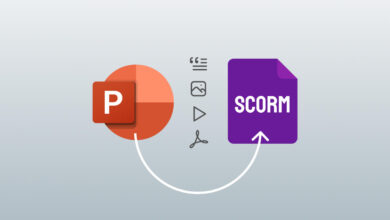What Is Customer Training? Definition, Benefits, And A Quick How-To Guide

Customer training is a hot topic among businesses, especially those offering SaaS or complex products. Also referred to as customer education, this type of training focuses on customers only, empowering them to leverage your product to its full potential.
As we’ll explain further in this post, this comes with several benefits both for the customers and the business.
Whether you’re considering offering customer training for the first time or looking for tips to perfect your strategy, you’ve come to the right place.
In this blog post, we’ll explore what customer training is (and what it isn’t!), its benefits, and a quick guide for successful implementation.
9000+ brands trust LearnWorlds to train their people, partners & customers.
What is Customer Training?
Customer training is a combination of initiatives designed to help customers learn how to use a product. For example, a customer training strategy can include training courses, a knowledge base with learning material, on-demand or live webinars, and personalized or group calls with customer success agents. It’s usually part of a customer enablement strategy.
💡What does learning how to use a product entail?
✅ learn all product use cases
✅ discover all available features
✅ navigate and use the product with confidence
✅ troubleshoot minor issues
Of course, learning about all available features and use cases does not mean the customer will leverage all of them. But it’s important that they know they exist so they can choose whether to use these functionalities. In fact, low feature discovery and adoption rates are problems you can overcome with a customer training program.
As for troubleshooting, customer training does not aim to create product specialists but confident users who feel comfortable “playing around” with the product and who also have access to material that helps them overcome roadblocks when using the product.
Offering a certificate at the end of a full-fledged customer training course is a common practice among SaaS companies, and all the more so by popular tools with wide application in the workplace. The certificate is usually awarded following the successful completion of an exam.
What customer training is not:
❌ product training
❌ customer onboarding
Let us be more specific:
While customer training offers, by definition, some type of product training, the latter is usually a type of employee training – especially for employees who are heavily involved either in product development or customer support.
Product training goes into deep technical details about the product that the average customer doesn’t need to learn.
Customer onboarding has a more narrow application and mostly concerns helping new customers set up your product rather than exploring it in full, eg, configuring basic settings, migrating data from another tool, etc.
So, you could say that onboarding is the first phase of customer training, where the customer receives support to get started with your product.
Benefits of Customer Training
Customer training is essential to a customer success strategy as it massively improves the customer experience in the after-purchase stages.
An effective customer training program is beneficial for the customer and the business alike in the following ways:
Improve feature / product adoption: customers discover and learn how to use product features.
Enhance user experience: customers navigate the product with ease and confidence.
Accelerate time to value: reduce the time it takes for customers to discover and fully leverage your product’s capabilities.
Increase customer satisfaction: being able to enjoy and utilize a product to its fullest increases CSAT scores.
Boost customer retention rates: customers are more likely to stay loyal to a useful product and a company that proactively addresses their needs.
Prevent early customer churn: it’s not uncommon for customers who don’t get immediate value out of a product to change to a competitive one.
Build trust and customer loyalty: deploying a customer training program is active proof that you invest in customer experience and respect your customers – and they appreciate that!
Increased perceived value and authority: offering training material elevates the value of your product in your customers’ eyes.
Boost brand image & messaging: a customer training program enables you to reinforce and establish your brand.
Facilitate sales, upselling & cross-selling: as customers discover more use cases and build trust in your company, they’re more likely to buy more from you.
Boost renewal rates: customers who have found true value and incorporated your SaaS product into their lives are more likely to renew their subscription.
Reduce customer support tickets: customers who have access to learning resources are less likely to reach out to customer support.
Extend customer lifecycle: customers will stay with your company longer since customer training enables them not only to use your product best but also helps you stay top of mind through communications and events.
Increase customer lifetime value (CLV): customers will buy more products and subscribe to higher plans if they feel confident about the usability of your product.
Communicate new features, products, and more: a customer education program enables you to maintain an open line of communication.
Drive business growth: as a result of all the above, your company should be able to stay financially healthy and keep growing.
Actually, offering a customer education program works to your benefit before a prospective customer even signs up.
Having a program in place can be used as an additional selling point for your salespeople, increasing the perceived value of the product and demonstrating a commitment to proactively meeting customers’ needs – two things which can only help close a sale faster.
A How-To Guide for a Successful Customer Training Strategy: 12 Tips for Success
Customer training is key to happy, loyal customers. Here’s how to implement an effective customer training strategy, step by step:
Identify Training Needs
Before you start building customer education content, you need to be clear about your customers’ training needs. Although content like setup guides is always useful, you want to make sure you don’t leave out other resources your customers need.
Some ways to uncover training needs:
Use heat maps to monitor user activity when navigating the product
Analyze customer support tickets to identity recurring questions & issues
Send out feedback surveys to customers
Align With Business Goals
Set business goals and metrics that will help you focus your efforts on what you hope to achieve and later measure the effectiveness of your program. A tried-and-tested method for goal setting is the SMART methodology (all parameters should apply):
Specific. A goal should be as specific as possible. Eg, instead of thinking about “boosting revenue,” which is a rather vague and broad goal that involves several KPIs, you could plan for “decreasing incoming support tickets.”
Measurable. Set a number to measure the goal against, eg “decreasing incoming support tickets by 5%”
Attainable. The goal must be realistic. For example, don’t set a goal of “decreasing incoming support tickets by 10% in two months” because then you’re just setting yourself up for failure.
Relevant. The goal should be relevant to your initiative. For example, don’t set a goal relevant to employee performance.
Time-bound. Set a (realistic) timeframe within to achieve the goal.
Create Structured Learning Paths
As you build your program, make sure it progresses in a way that learners can follow through, eg., by moving from basic settings to more advanced features and use cases. Depending on the complexity of your product, you can also organize your courses per feature or use case.
Invest in a Learning Management System (LMS)
A Learning Management System can help you deploy customer training at a scale, organize live webinars, and offer your training resources all from one platform. An LMS will also enable you to optimize your workflow with user management and automations and bulk actions. It’s an excellent solution to facilitate a tech-touch customer onboarding strategy.
LearnWorlds is a lightweight LMS that stands out in the eLearning market as a top customer education platform. LearnWorlds is easy to use both for admins and learners with a clean User Interface that has been recently updated for even greater efficiency and intuitiveness.
It’s also SCORM compliant, supports different content formats (audio, video, and text content), and the ability to add interactions. It additionally offers integrations with third party tools, including video conferencing tools, Hubspot, and marketing/eCommerce tools.
With LearnWorlds, you can build multiple schools and not only customize but also brand them as you wish to further reinforce your brand.
A key differentiator of our platform? LearnWorlds features an intuitive website builder with pre-made, customizable templates, so you can build public-facing training academies in a heartbeat and with amazing design options!
9000+ brands trust LearnWorlds to train their people, partners & customers.
Utilize Microlearning
Definitely favorite microlearning over long-form courses. Customers need access to easily digestible resources that give them the information they need when they need it – and smaller modules fit the bill perfectly without causing unnecessary mental strain.
Make it Mobile-Friendly
Training content should be easy to navigate through, just like scrolling on social media. That’s why it’s essential to choose a mobile-friendly platform or, better yet, one that enables you to launch your own mobile app.
Offer Diverse Material
Avoid sticking to one type of content, as this does not help to impart knowledge successfully. It’s not only because learning preferences among your customers will vary – you should also take into account factors like what you want customers to learn, when and how you expect them to access the training material, and more.
For example, for more comprehensive learning, you can offer video tutorials, self-paced courses, and webinars. You can even include case studies for inspiration.
Setup guides & user manuals are also very useful for customer onboarding. Quizzes are another must-have addition to measure learner progress, allow for self-evaluation, and reinforce learning.
You should also add interactive elements, such as:
Live training sessions to address questions in real-time
A community of learners
Simulations as fun games that enhance learning
🔥Use gamification techniques, even simple ones like badges, to increase motivation.
Offer a Certificate
Offering a certificate can do wonders in terms of learner engagement and motivation, plus it adds credibility to your product. Successful learners can showcase their certificate as an additional asset to their resume, which can justify putting a price tag on your training course.
Use Your Branding
Customer training can also be viewed as a marketing activity. By offering training material and organizing online events to demonstrate your product and connect with your customers, you’re building your brand.
Therefore, it’s important to let your brand shine by using white-labeled hosting platforms and using your brand colors and consistent messaging across all your customer training activities.
Include Feedback Surveys
Feedback surveys are an essential and easy addition to measure customer engagement and collect feedback. Send them out via email or your training platform to learn how customers view your customer education efforts and make suggestions for improvements.
Integrate Training With Customer Support
Customer training shouldn’t be limited to a learning experience in the strict sense of the word. You should view customer training as part of your larger customer support offerings, so opportunities for customer education should be plenty and available all around, eg., via your customer support team and customer success managers, or a knowledge base.
Monitor the Results & Optimize
Whether through feedback surveys, LMS reports, or business KPIs, make sure you have planned for a couple of ways and data sources to measure whether customer training has the desired impact and how customers feel about it.
LearnWorlds as the Optimal Solution for Customer Training
Build stronger customer relationships and keep your customers close by offering the support and educational resources they need. Maintaining a financially robust business and a strong brand requires continuous effort – and customer training contributes to both.
LearnWorlds is an award-winning LMS that covers all your customer training needs. Try LearnWorlds now with a 30-day free trial!
9000+ brands trust LearnWorlds to train their people, partners & customers.
(Visited 411 times, 1 visits today)

Androniki Koumadoraki
Androniki is a Content Writer at LearnWorlds sharing Instructional Design and marketing tips. With solid experience in B2B writing and technical translation, she is passionate about learning and spreading knowledge. She is also an aspiring yogi, a book nerd, and a talented transponster.


